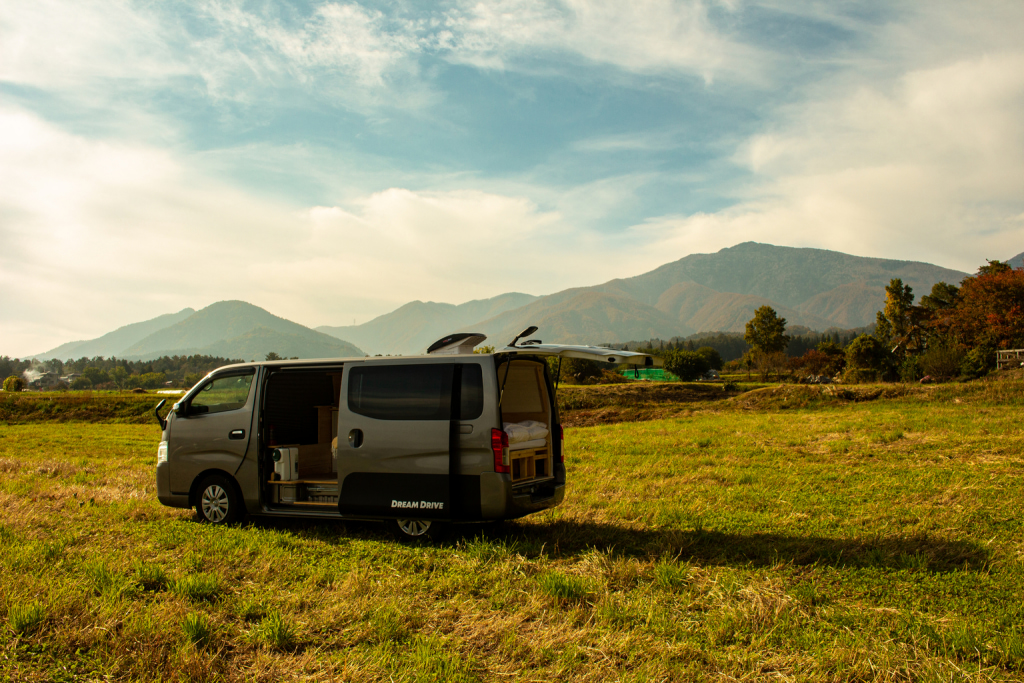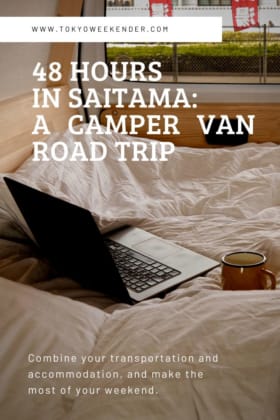While Japan’s efficient local and bullet train system certainly has its perks, so much of the country’s unique charm and natural beauty is only accessible if you take a road trip. Now, of course you can rent a car and book hotels or campsites along the way, but why go to all that hassle when you can combine your transportation and accommodation in one fun vehicle?
Dream Drive is a new camper van rental company that offers custom-built vans complete with bedding and camping equipment. Each vehicle comes with a different set of amenities ranging from tables to air conditioning, but all come equipped with more than enough to make your trip comfortable. Providing a two-in-one solution to the intricate planning of a more traditional road trip, Dream Drive hopes to open up unknown Japan to travelers and Tokyo residents while also letting you relax and focus on what’s important: the journey.
For our Saitama weekend getaway, we drove their Shogun van, a NV350 Caravan that was revamped to hold a double bed and a dining table. If you’re new to outdoor living, the van also comes with anything you might need during your trip including chairs, an outdoor table and a gas stove.
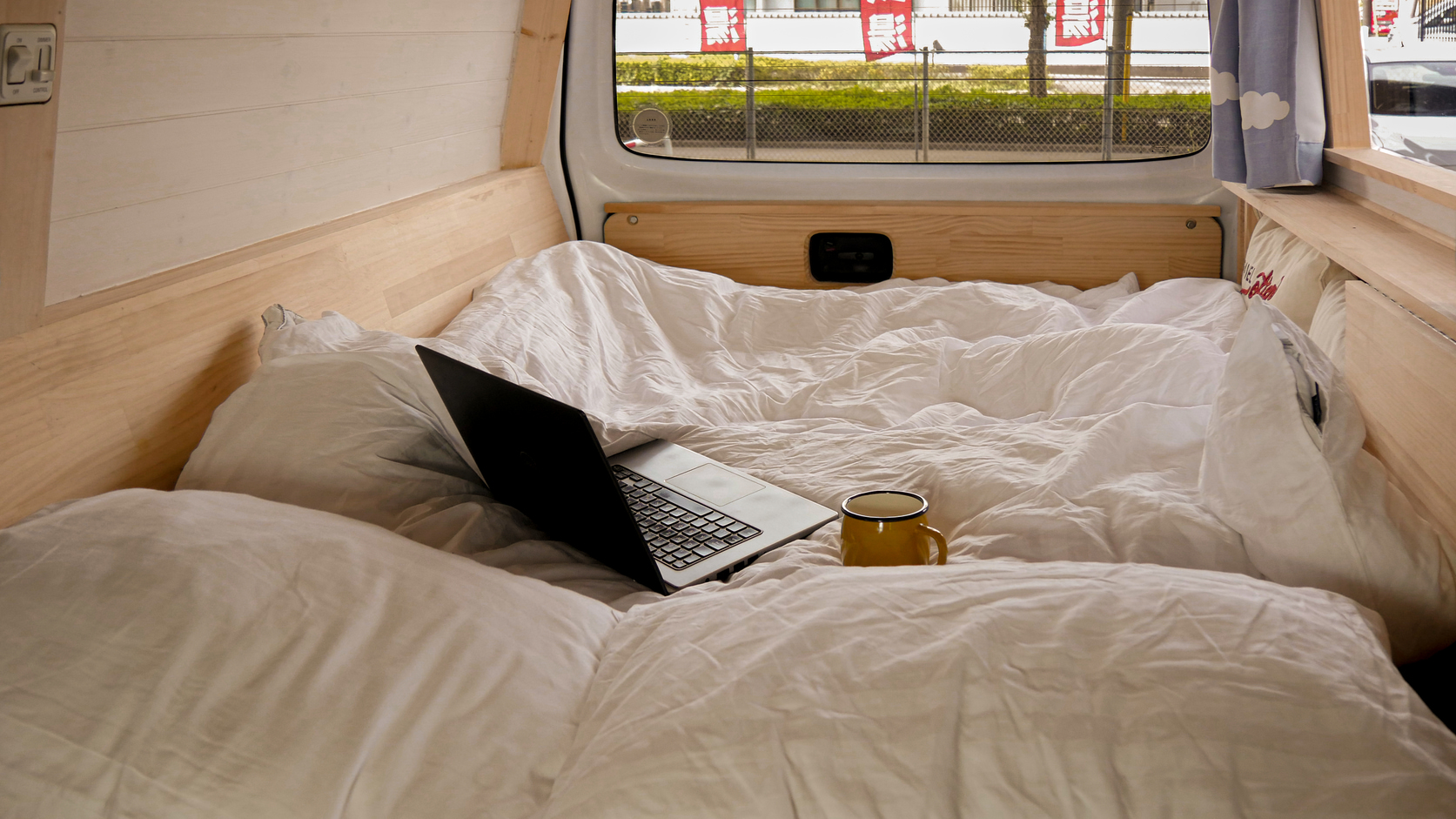
Our comfy Dream Drive camper van
Day 1: Nagatoro and Chichibu
Having never previously visited Saitama Prefecture, we chose the city of Chichibu as it was recommended by friends. We picked up Shogun on a Friday evening and hit the road, anticipating a relaxed weekend of café hopping. However, we ended up spending most of our Saturday exploring the nearby town of Nagatoro. Every time we thought we’d seen it all, we’d round a corner and another street of hidden gems would reveal itself.
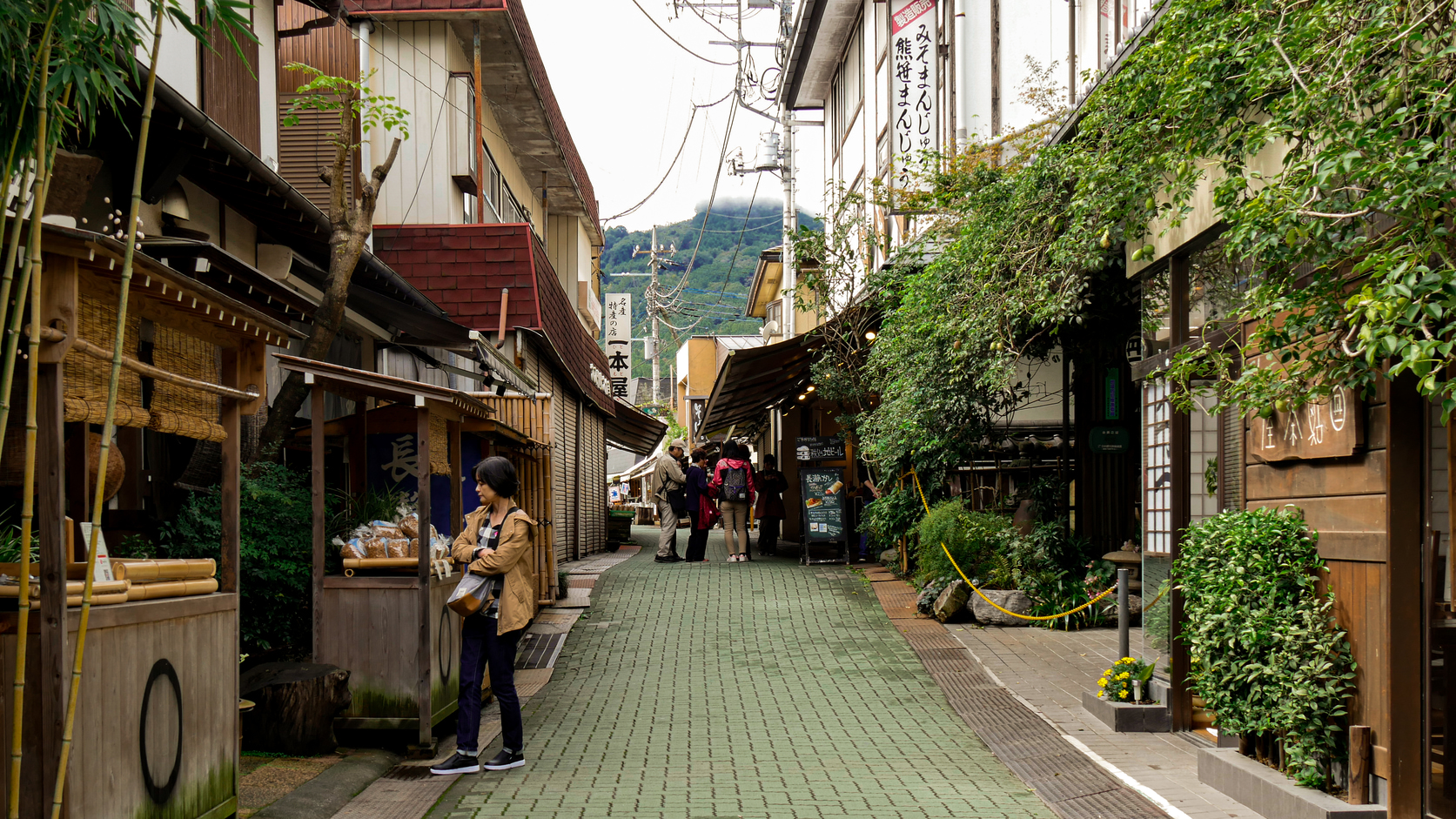
Nagatoro, Saitama Prefecture
We strolled along Arakawa River, which was still gushing after the heavy rain of Typhoon Hagibis. Though access was not recommended by officials, we came across many locals sitting on the shore’s famously scenic layered rocks (named Iwadatami because they reminded locals of stacked tatami mats) to paint and draw the landscape.
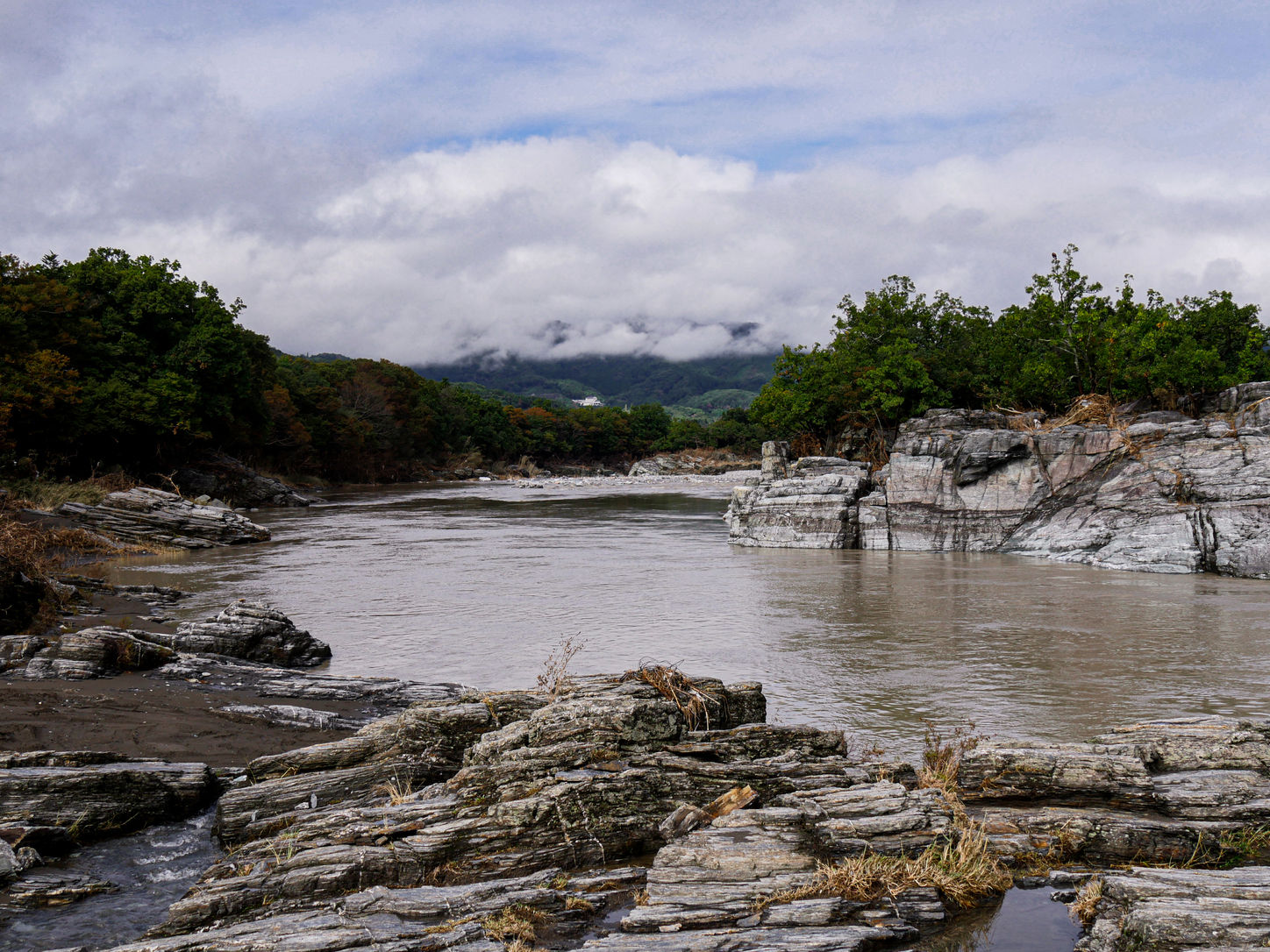
On the shore of Arakawa River
After roaming the streets and before heading up for a quick hike, we decided to enjoy a light lunch and treat ourselves to the region’s famous delicacy: kakigori (shaved ice). Even though the weather was chilly, we couldn’t miss the opportunity to visit the town’s most famous kakigori spot, Asami Reiso, and not have to wait for a table (expect to line up for a minimum of two hours during the summer).
Nagatoro is famous for its unique preparation of this particular dessert. The city’s kakigori is made from natural blocks of ice that are collected from the frozen river during the winter months, and as a result has a sticky yet smooth texture, similar to that of a snowball. Best of all, it doesn’t crumble when you pour milk or syrup over it.
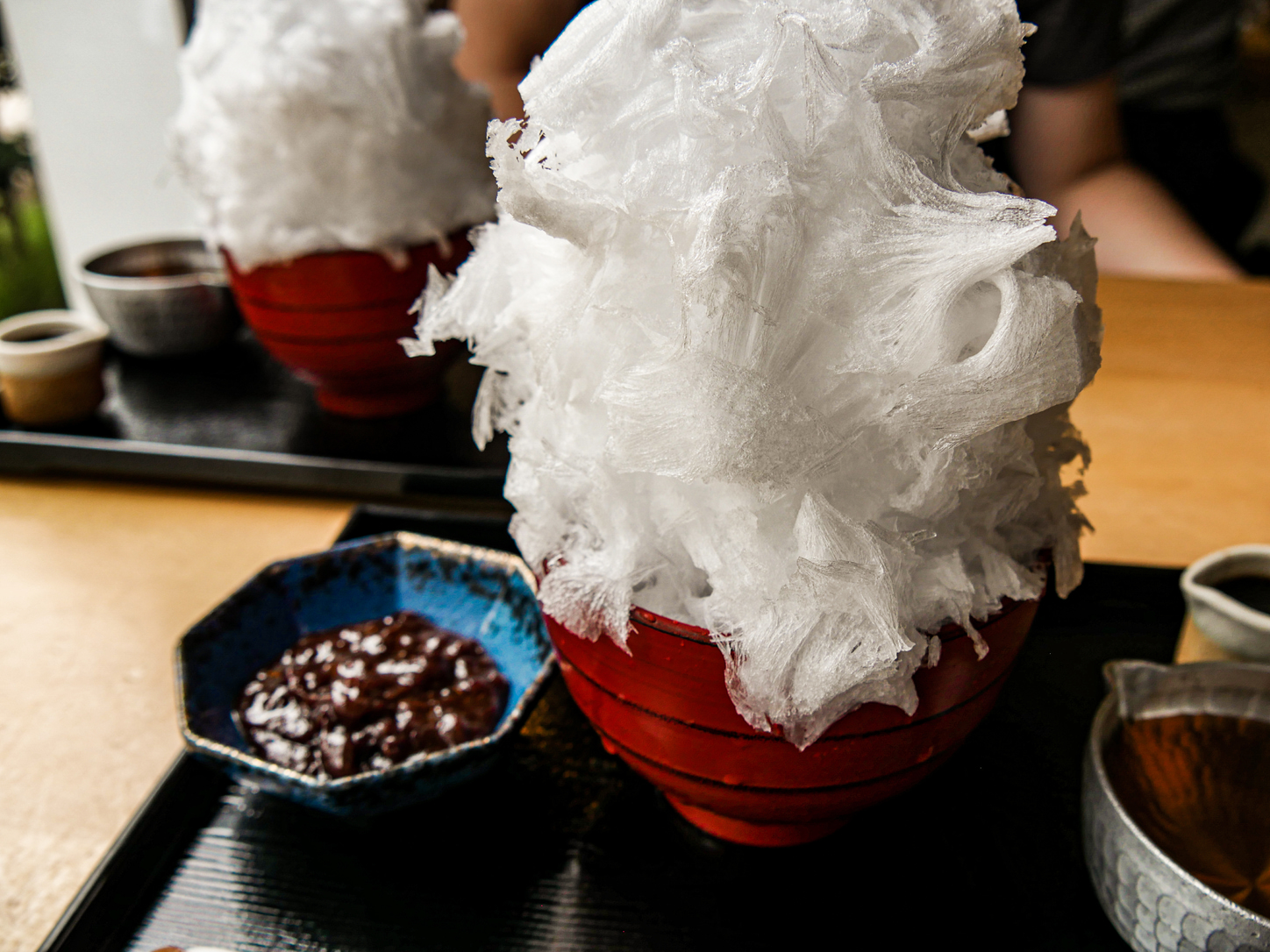
Kakigori
After hiking up Mount Hodo, we returned to our van for the next leg of road tripping, aiming to arrive in Chichibu in time for dinner. We parked at Seibu-Chichibu Station, which has been renovated to include an onsen and shops stocking local goods and endless merchandise of the city’s too-adorable mascot, Potekuma-kun.
For dinner, we headed to Takasago Horumon, popular for its inexpensive but delicious Japanese barbecue menu. It’s also very time efficient. If you’re looking for a quick meal, you can work your way through a few plates in about half an hour before climbing back into the van and bedding down for the night.

A rustic alley a few minutes south of Chichibu Station
Day 2: Kawagoe, Moominvalley Park and Johnson Town
Our first stop was in Kawagoe to experience one of Japan’s “Little Edo” towns. The main street features beautiful, ancient architecture and plenty of spots for enjoying craft beer, coffee, lunch and shopping for artisanal goods. As luck would have it, we arrived just as a local matsuri was on the go. We roamed the streets, soaking up the festival atmosphere and tucking into snacks and homemade lemonade along the way.
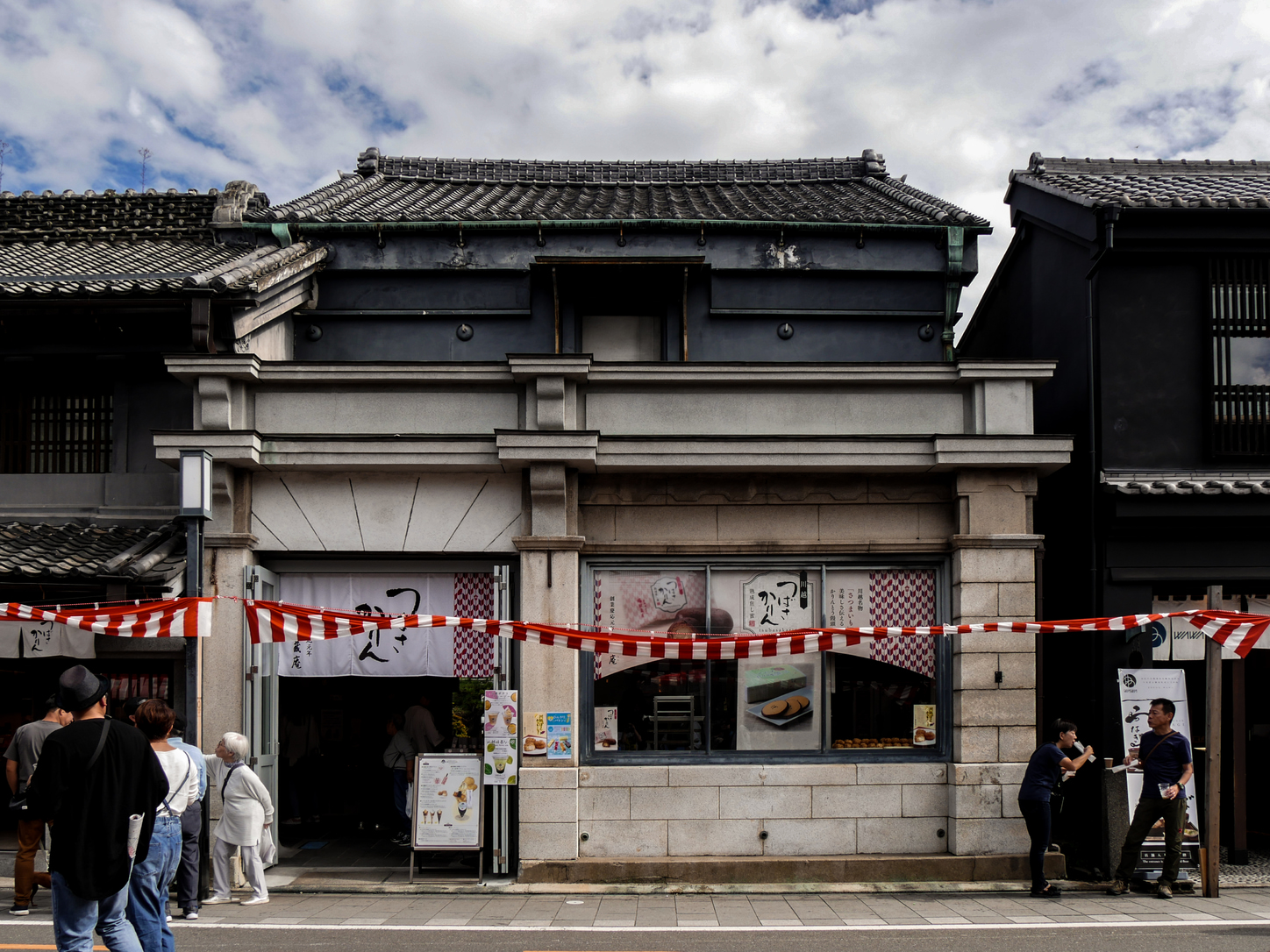
Kawagoe, Saitama Prefecture
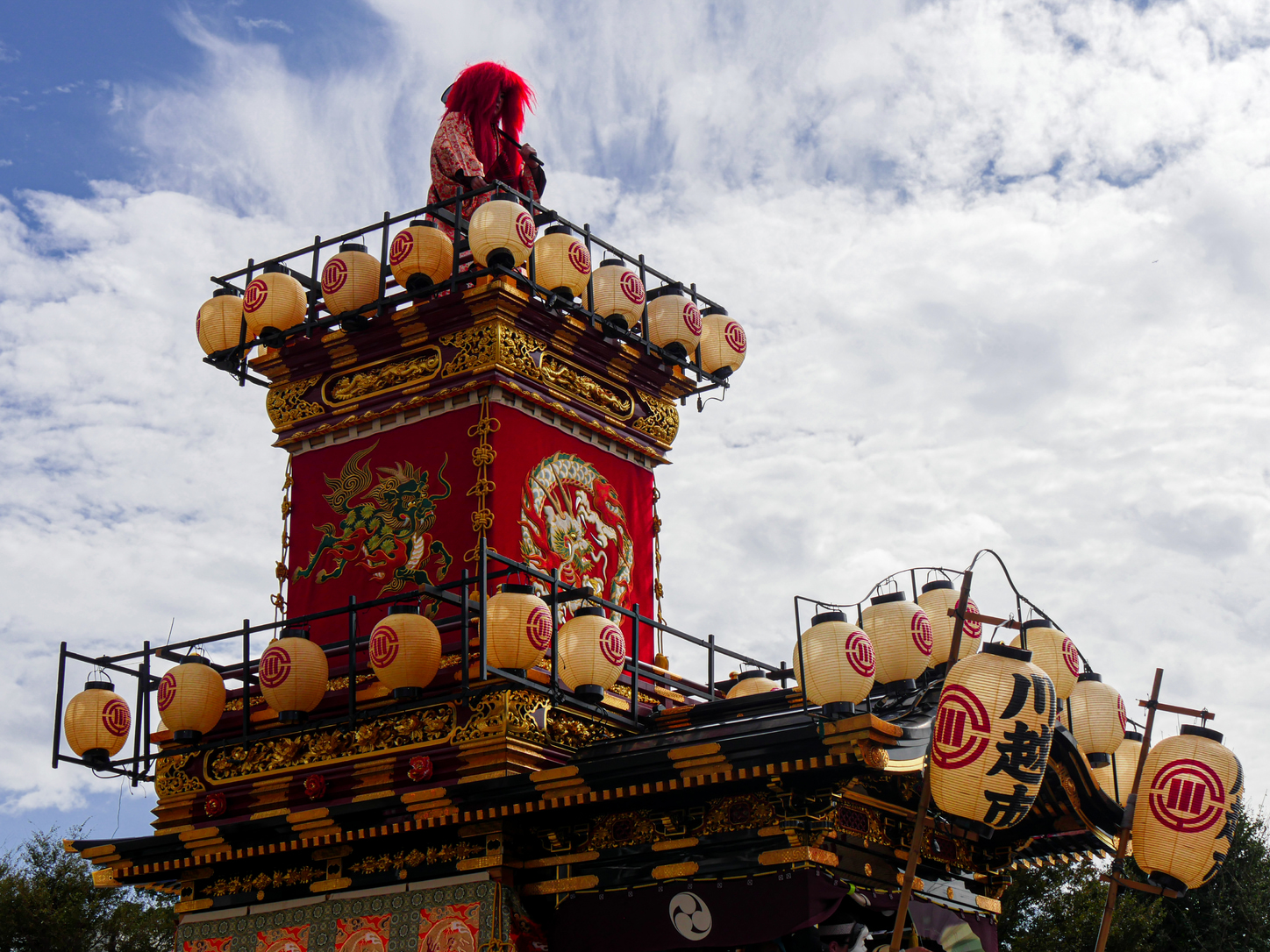
The top of a matsuri float in Kawagoe
Next up was a stop at Metsä, which opened in November 2018, and showcases all things Nordic. Set on the peaceful shore of Lake Miyazawa in Hanno city, this village offers plenty of natural beauty as well as shopping and dining. It’s also home to Moominvalley Park, which opened in March 2019 and where the adorable characters from Tove Jansson’s popular comics come to life.
Our last stop was Johnson Town, a small neighborhood in Iruma that was originally developed to house US military families after World War II. Now looking more like a movie set than a real neighborhood, it’s made up of retro American suburban buildings that were restored in 2009, classic cars and beautifully decorated coffee shops. It was a perfectly cute and quaint way to spend our Sunday evening before making our way back to Tokyo.
Where to Spend the Night in Your Dream Drive Camper Van
You might be thinking that renting a camper van means needing to book into campsites. However, there’s another, simpler option for those who aren’t necessarily looking for the full camping experience and just need a quick, accessible place to sleep overnight.
Many super sento facilities accept overnight parking if you simply pay the entrance fee of about ¥1,500. You get to enjoy the baths, shelves of manga and board games for a budget-friendly price.
For more information about Dream Drive, book your room to go at www.dreamdrive.life/en

